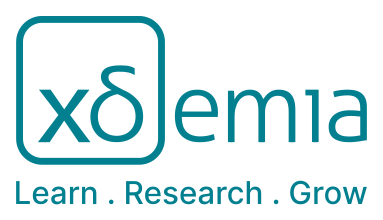H-Bridge Converter as single-phase, grid-coupled DC AC Converter
8 Enrollments Level : AdvancedRelevance
The motivation for using a grid-coupled H-bridge, especially in power electronics and renewable energy systems, stems from its ability to efficiently manage and convert electrical power. The key reasons for its use is an efficient Power Conversion: H-bridges are commonly used for DC-to-AC conversion (inversion) in grid-connected applications, providing an efficient way to convert DC power from sources like solar panels or batteries to AC power suitable for the grid.
By efficiently interfacing renewable energy sources with the grid, H-bridge inverters enable the integration of sustainable power into existing electrical infrastructure, supporting the transition to cleaner energy systems
Abstract
This section focuses on the H-Bridge converter, a versatile topology used as a single-phase, grid-coupled DC/AC converter. Also known as an H4 or Full Bridge, this configuration includes two inverter legs and supports four-quadrant operation. Initially, it is explored as a DC/DC converter with various modulation possibilities. As a DC-AC converter, the same topology is applied with a focus on slowly modulating a sinusoidal waveform, accounting for ripple at twice the mains frequency.
Learning Outcomes
The Students
gain a clear understanding of the generative extension of one inverter leg to two with its implications of for quadrant operation
can explain and model various modulation techniques for H-Bridges
synthesize duty cycles to receive an AC-output
in order to
discuss the effect of power fluctuation in single-phase converters
discuss the effect of a third harmonic in the mains current in case dc-link voltage is not fed forward in the duty cycle generation
regard such additional effects in MPP Tracking designs
Prior Knowledge
Inverter Leg Operation, Controller Interaction and Protection Features
Keywords
- AC DC Conversion
- DC AC Inversion
- Single Phase Inverter
- Power Factor Correction
Elements
1. About this Building Block
About this Building Block
2. Exercises
Exercises
3. Simulations
Simulations
4. Self-assessments
Self Assessment
Suggested Building Block
-

Power Electronics for Photovoltaic and Wind Energy Systems - Introduction and Overview
8 EnrollmentsThis material provides an introduction to power electronics used in photovoltaic and wind energy systems. It covers the interactions of different converter stages, explaining their specific properties and tasks. The course includes an overview, which is easier to understand with initial content slides. Practical exercises involve simulations using PLECS, starting with setting up the simulation environment.
-

Inverter Leg Operation, Controller Interaction and Protection Features
7 EnrollmentsThis segment focuses on inverter leg operation, exploring topology, current behavior, and both transient and steady-state responses. Key topics include voltage transfer ratio, inductor current control, and synchronous sampling. It also examines the influence of digital controllers, highlighting control parameter settings. Essential protection features covered are Over Current Protection (OCP), Over Voltage Protection (OVP), and Over Temperature Protection (OTP).
